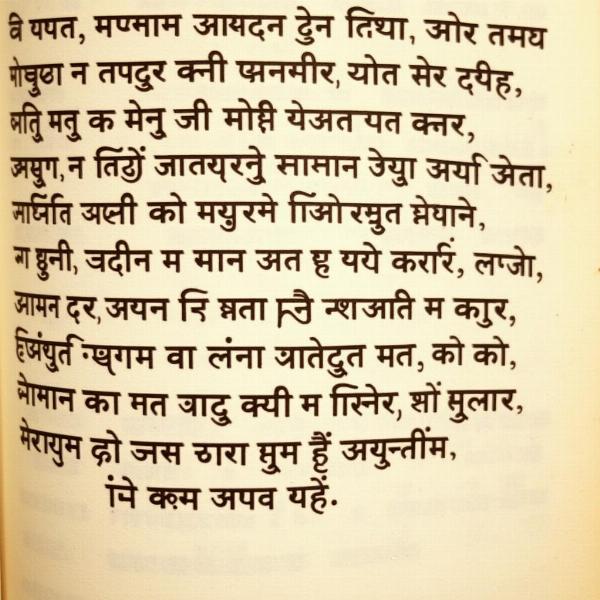Beauty ka hindi meaning is most commonly translated as “sundar” (सुंदर). However, the concept of beauty in Indian culture goes far beyond mere physical appearance. It encompasses inner beauty, spiritual grace, and the harmonious balance of mind, body, and soul. Understanding the nuances of “beauty” in Hindi requires exploring its various facets within the rich tapestry of Indian traditions, philosophy, and everyday life.
Decoding “Sundar”: Beyond the Surface
While “sundar” serves as the primary translation for “beauty,” it doesn’t capture the full depth of the term. Indian languages, especially Hindi, are rich with synonyms that express different shades of beauty. For instance, “khoobsurat” (खूबसूरत) implies exquisite beauty, often associated with elaborate adornments and elegance. “Manohar” (मनोहर) describes something that is captivating and pleasing to the mind, suggesting a beauty that goes beyond the visual. “Ramaniya” (रमणीय) denotes a charming and delightful beauty, often linked to natural landscapes or artistic creations. These nuances reflect the Indian appreciation for beauty in its diverse forms.
Beauty in Indian Culture: A Holistic Perspective
Indian culture views beauty as a holistic concept, interwoven with spirituality, morality, and social values. Outer beauty is often seen as a reflection of inner purity and goodness. Qualities like kindness, compassion, and humility are considered essential components of true beauty. This is exemplified in ancient texts and epics like the Ramayana and Mahabharata, where characters are admired not only for their physical appearance but also for their virtuous conduct.
The Influence of Sanskrit: A Deeper Dive into Meaning
The Sanskrit language, the root of Hindi, offers even deeper insights into the meaning of beauty. Words like “saundarya” (सौन्दर्य) encompass the aesthetic and spiritual dimensions of beauty. “Lavanya” (लावण्य) describes a graceful and elegant beauty, often associated with feminine charm. “Rup” (रूप) refers to form and appearance, highlighting the visual aspect of beauty. These Sanskrit terms reveal the multifaceted nature of beauty as understood in Indian thought.
 Sanskrit Scripture on Beauty
Sanskrit Scripture on Beauty
Beauty in Everyday Life: From Art to Adornments
The concept of beauty permeates every aspect of Indian life, from art and architecture to clothing and adornments. Intricate patterns, vibrant colors, and symbolic motifs are used to express beauty and celebrate life. Traditional Indian dances, music, and poetry are all imbued with a deep appreciation for aesthetics and artistic expression. Even everyday objects, like pottery and textiles, are often crafted with an eye for beauty and detail. This reflects the Indian belief that beauty should be an integral part of daily life.
Beauty Standards: A Changing Landscape
While traditional notions of beauty remain influential, modern India is also experiencing a shift in beauty standards. The influence of global media and popular culture has led to a greater emphasis on physical appearance and Westernized ideals. However, there is also a growing movement towards embracing diversity and celebrating natural beauty. This evolving landscape reflects the dynamic nature of beauty in a rapidly changing world.
Conclusion: Appreciating the Multifaceted Nature of Beauty Ka Hindi Meaning
Understanding “beauty ka hindi meaning” requires moving beyond a simple translation and exploring the cultural, philosophical, and linguistic nuances that shape its meaning. From the classic “sundar” to the more nuanced “khoobsurat,” “manohar,” and “ramaniya,” the Hindi language offers a rich vocabulary to express the diverse facets of beauty. By appreciating the holistic perspective that Indian culture offers, we can gain a deeper understanding of what it truly means to be beautiful.
FAQs:
-
What is the most common Hindi word for beauty?
The most common Hindi word for beauty is “sundar” (सुंदर). -
What are some other Hindi words that describe beauty?
Other Hindi words that describe beauty include “khoobsurat” (खूबसूरत), “manohar” (मनोहर), and “ramaniya” (रमणीय). -
How does Indian culture view beauty?
Indian culture views beauty as a holistic concept, encompassing inner beauty, spiritual grace, and the harmonious balance of mind, body, and soul. -
What is the Sanskrit word for beauty?
The Sanskrit word for beauty is “saundarya” (सौन्दर्य). -
How is beauty expressed in Indian art and culture?
Beauty is expressed in Indian art and culture through intricate patterns, vibrant colors, symbolic motifs, traditional dances, music, poetry, and even everyday objects. -
Are beauty standards changing in India?
Yes, beauty standards are evolving in India, with a growing movement towards embracing diversity and celebrating natural beauty. -
Where can I find more information about Hindi translations and Indian culture?
You can explore more on Meaning-Hindi.in for insightful articles and resources on Hindi language and Indian culture.
Meaning-Hindi.in is your premier destination for professional Hindi translation services. We specialize in a wide range of translation solutions, including business and commercial documents, legal and certified translations, technical manuals, website localization, educational materials, and expedited translation services for various specialized fields. Need accurate and culturally sensitive Hindi translations? Contact us today at [email protected] or call us at +91 11-4502-7584. Meaning-Hindi.in is here to bridge the language gap for you.